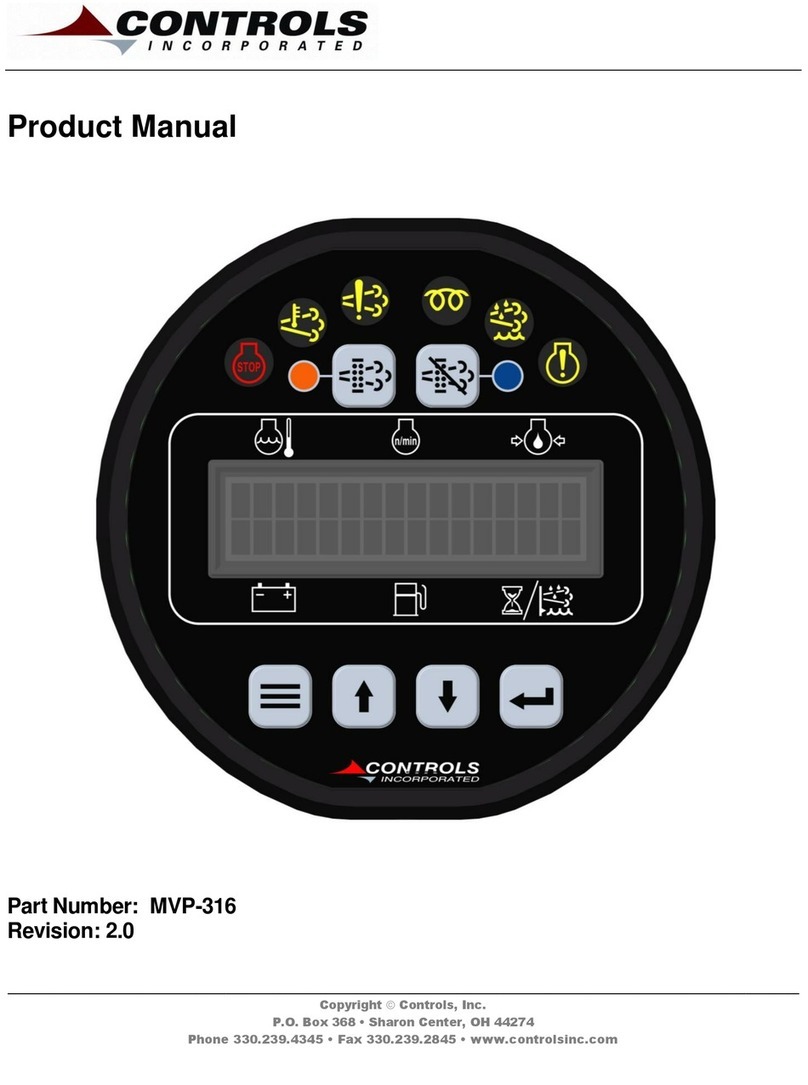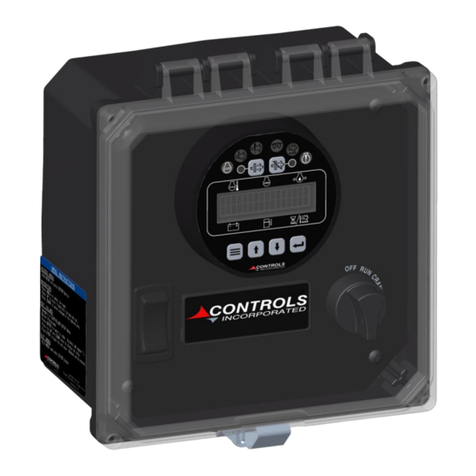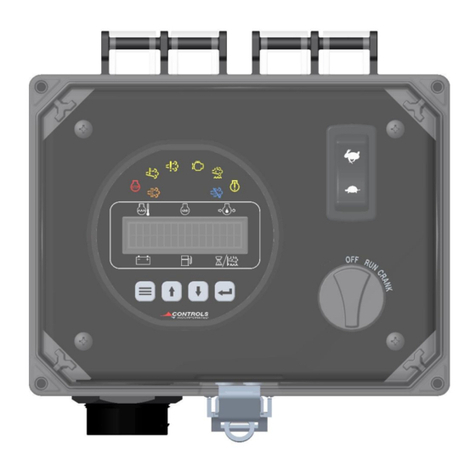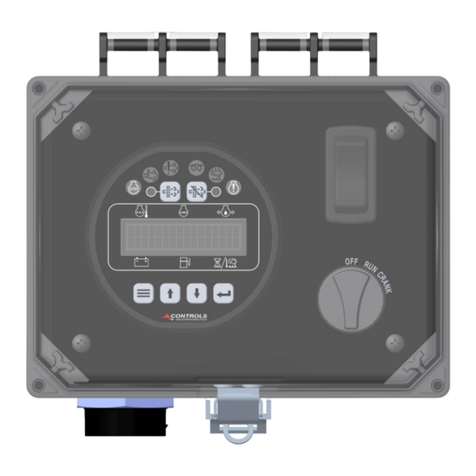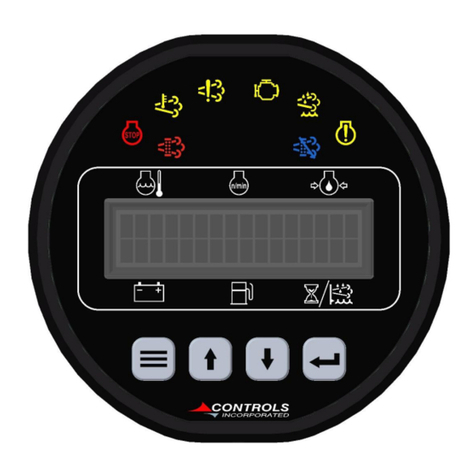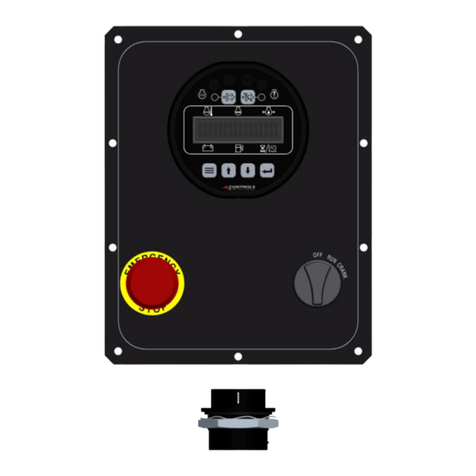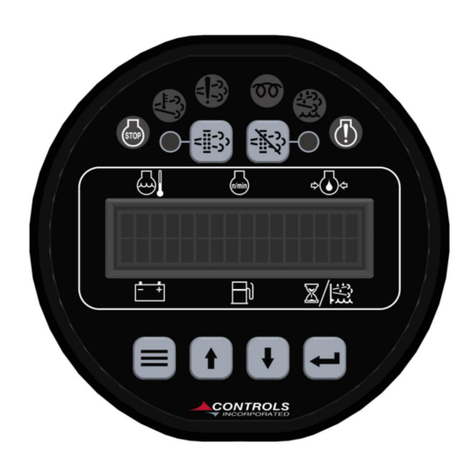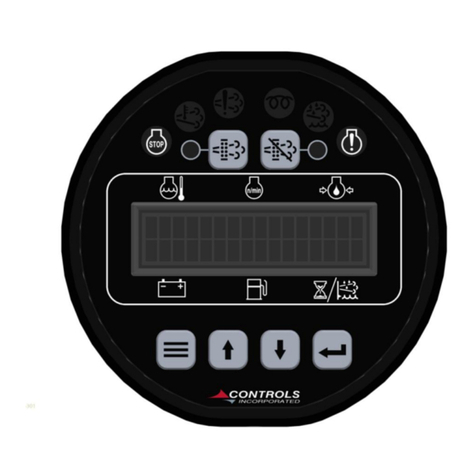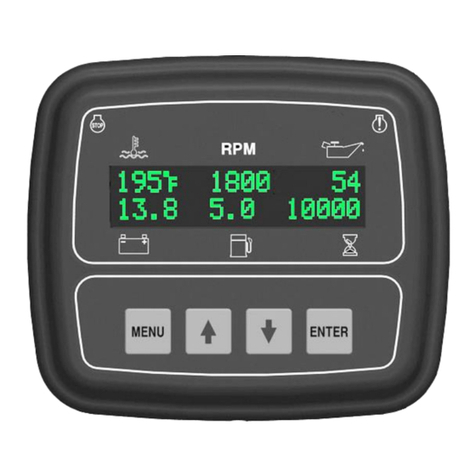
CONTROLS, INCORPORATED
C O N T R O L S Y S T E M S & S O L U T I O NS
- 2 -
MVP-308 OPERATING SPECIFICATIONS
ECO MODE
OFF MODE - Standard throttle control using UP and DOWN buttons (between MIN
SPEED 800 rpm and MAX SPEED 2400 rpm).
Boom-in-Rack and Leaf Detector Inputs are not monitored.
ON MODE - Standby Delay timer is activated (default = 2 minutes, configurable).
After the Standby Delay, engine speed returns to Standby Speed - 1200 RPM.
Engine RPM can be manually adjusted at any point using the UP and DOWN buttons.
A manually adjusted engine RPM above Standby Speed becomes the Work Speed
setting. The new Work Speed is flashed on the screen after a short delay (to ensure
ramping is finished).
Use of manual throttle keys will reset the Standby Delay
A manually adjusted speed below the Standby Speed allows for clutch engagement at
low speed and the Work Speed setting is set to the previous Standby Speed setting. The
Work Speed setting is not saved after a power cycle
Standby Speed and Standby Delay settings are saved after a power cycle
BOOM-IN-RACK
When Boom-in-Rack is engaged, engine RPM will move to the Standby Speed (takes
priority over Standby Delay timeout).
If Boom-in-Rack is active and Leaf Detector input becomes engaged:
1. Ignore the Leaf Detector input and do not ramp to Work Speed
2. Screen will display “Boom in Rack is Active”
LEAF DETECTOR
When Leaf Detector is engaged, engine RPM immediately increases to the Work Speed
setting.
If the Leaf Detector input becomes disengaged, a Leaf Detector Delay (10 seconds, not
configurable) is started. If the input remains disengaged until the timer expires then
engine RPM decreases to Standby Speed.
